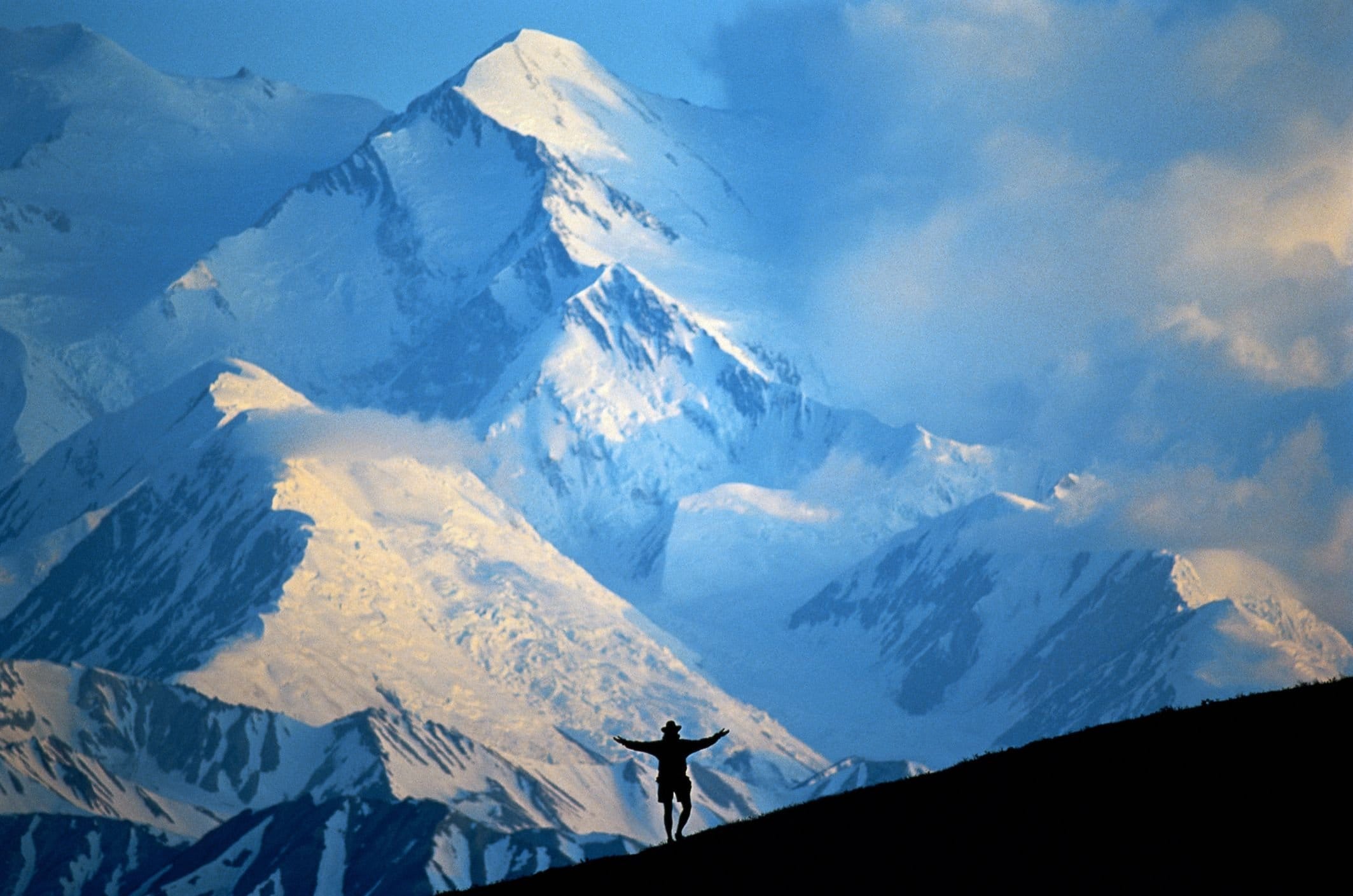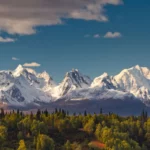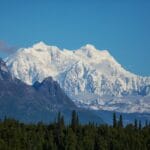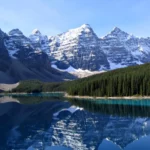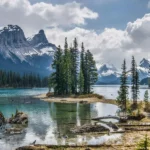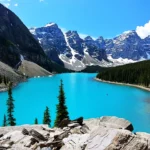Towering mountain ranges enthrall both explorers and environmentalists in the United States, which boasts a varied and stunning terrain. Alaska is supreme with its enormous mountains, including the powerful Denali, but the continental US presents its own special collection of summits calling for outdoor enthusiasts and climbers.
Although the “Lower 48” Alaska is renowned for its breathtaking mountain views, if you venture outside of the state, mountain ranges all throughout the nation feature numerous similarly high peaks. Alaska boasts 13 of the 13 highest mountain summits in the United States; Denali, previously Mount McKinley, tops at 20,310 feet above sea level.
Why are the American continental mountains smaller?
Comparatively to those found in Alaska, the mountains of the mainland United States would seem little. Denali, the state boasts the highest peak of North America. Rising to 20,310 feet (6,190 m), this mountain is far taller than Mount Whitney, the highest peak in the lower 48 states.
Actually, Alaskan territory hosts 13 of the 15 highest mountains in the United States.
What Restrain Mountains’ Elevation in Continental USA
Major mountain ranges including the Rocky Mountains, the Sierra Nevada, the Cascades, and the Appalachian Mountains abound on the continental United States. There are several reasons why the tops in these ranges, in the lower 48 states, fall short of the mountains of Alaska.
Reduced Tectonic Activity in Less Intensity
The mountains of Alaska attribute their great heights to strong tectonic activity in their area. On the coast and on the edge of the Pacific and North American tectonic plates, Alaska is vulnerable to the forces causing the fast elevation and rather high height of these mountains. Many of the continental U.S. mountain ranges, on the other hand, are further from the strong action at the plate borders, hence producing less dramatic elevations even if they are impacted by tectonic activity.
Less Volcanic Action
Alaska’s location on the Pacific Ring of Fire makes it prone to fast mountain building from volcanic activity. Mountains formed from volcanoes owe their height to the buildup of their constituent elements. Older Age: The continental US’s volcanic areas are not as active or large as those of Alaska.
In geological perspective, the Alaskan mountains are quite young—formed during the Cenozoic era, the last 66 million years. Their young meaning they have had less time to undergo erosion, which progressively grinds down mountain ranges. Many of the mountain ranges in the continental United States, like the Appalachians, are far older and have been extensively eroded over millions of years, hence lowering their height.
Alaska’s cooler temperature also slows down erosion rates, allowing mountains to keep or even rise their height over time.
A Countdown: The Giants of the Lower 48
Including all of the lower 48 states but not Hawaii, Alaska, or any U.S. territory, this page will list the 10 highest mountains in the mainland United States.
First on the list, number 10:
Crestone Peak: Found in the Sangre de Cristo mountain range, a small portion of the Rocky Mountain range, Crestone Peak lies close to the Colorado town of Crestone. Rising 14,295 feet above sea level, this mountain ranks sixth among all the Rockies at its highest point. Many enthusiastic mountain climbers find great challenge on this summit.
Uncompahgre Peak: Sixth tallest peak in Colorado, Uncompahgre Peak rises 14,321 feet above sea level. Another range of the Rocky Mountains, the San Juan Mountain Range houses it. Although Uncompahgre Peak is not a volcano per such, it is a volcanic mountain—that is, one developed by volcanic activity. Uncompahgre, the name of this mountain, is Ute (Native American tribe) term meaning “dirty water,” or “red water spring.”
La Plata Peak: La Plata Peak is the fifth highest peak in Colorado and is also found in the Rocky Mountains there. Rising 14,336 feet, it is a component of the Colorado Sawatch Range. La plata in Spanish is “the silver,” hence this peak was named after the several silver mines in the vicinity. Important silver mining communities in the 1900s were the ghost towns of Winfield and Hamilton nearby. One may find the trailhead of this peak on a paved road.
Blanca Peak: Another mountain in the Colorado Rocky Mountains, Blanca Peak rises to be 14,351 feet tall. It is sandwiched east from the San Isabel National Forest and west from the Rio Grande National Forest. Known to the Navajo people as Tsisnaasjinior “Sacred Mountain to the East,” Blanca Peak stands highest in the whole Rio Grande drainage basin.
Mount Williamson: Mount Williamson is a Sierra Nevada range mountain in California. The second highest peak in the state is at 14,379 feet above sea level, at its highest point. Climbing this summit can be rather the adventure given its overall height increase of more than 8,000 feet. Should you decide to ascend this mountain, you might perhaps find yourself lucky enough to view a rare bighorn sheep since the California Bighorn Sheep Zoological Area runs across it.
Mount Rainier: Mount Rainier lies in the Cascade Mountain Range in the state of Washington. Though it is only the fifth tallest peak in the continental United States, it is among the most enormous volcanoes in the world with a height of 14,411 feet. Although this mountain is formally a volcano, it has not erupted since the late 1800s. Given its enormity, should it explode, it would severely harm the surrounding area and maybe kill thousands of people.
Mount Harvard: Mount Harvard is the third highest mountain in Colorado; it stands 14,421 feet tall. Indeed, this mountain is part of Colorado’s Rocky Mountains, yet it is connected to Massachusetts’ Ivy League University. First members of the Harvard School of Mining ascended to the top of this mountain in 1869, naming the peak for their college. They also ascended Mount Yale, the mountain adjacent to Harvard, renaming it Usually, this mountain is ascended in concert with Mount Columbia, a neighbor. The Collegiate Peaks are so named for colleges as so many of the mountains in this area bear names derived from universities.
Mount Mass: Mount Mass is the second highest peak in Colorado and, as its name implies, is rather huge. This mountain rises to be 14,424 feet tall at its peak point. There are five peaks overall, though, all above 14,000 feet and with a summit ridge more than three miles long! This makes this mountain the one with the most area above 14,000 feet in the contiguous United States—that is, another term for continental. In the heart of the state, it lies within the Sawatch Range.
Mount Elbert: Mount Elbert is also in the Colorado Rocky Mountains and just next door to Mount Massive. This mountain is 14,440 feet tall, which you would have observed is just 12 feet over its neighbor. There was a minor dispute concerning Mount Massive’s height vs Mount Elbert during the 1930s Great Depression. Fans of Mount Mass placed large rocks at Mount Elbert’s peak to make it taller when it was declared that Mount Elbert is taller, only to have these rocks toppled by Mount Elbert supporters.
Peak Whitney: At last, Mount Whitney marks the top of our highest mountains on the continental U.S. list. The Sierra Nevada Mountains in east-central California house this peak. Top peak in the lower 48 states, it is 14,505 feet above sea level. It resides on the edge of Inyo National Forest and Sequoia National Park. Known to Paiute Native Americans as Tumanguya, or “the very old man,” it is also the highest peak in the Great Basin Divide.
Interesting Information Regarding These Beautiful Mountains
Not many species of plants and animals can survive close to the pinnacle of these high towers. Growing close to Mount Whitney’s top, the blooming plant known as the sky pilot Though some, such butterflies, do travel by it, animals do not live at the summit.
Only 12 feet shorter, Mount Mass is a neighbor of Mount Elbert. Some would build piles of massive stones on Mount Mass’s top to increase its height in order to claim the title for highest peak. Mount Elbert supporters would then go along and destroy them.
Mount Massive ranks number one in the continental United States for the largest area above 14,000 feet, while third on the tallest peak list.
The name Mount Harvard came from Harvard College’s inaugural Mining School class in 1869.
In recognition of the team’s achievement in making it to the title game, Washington state legislature temporarily renamed Mount Rainier Mount Seattle Seahawks for Superbowl weekend of 2014 (January 31st to February 3rd).
La Plata Peak bears the name for every silver deposit discovered in and around the vicinity. Plata translates from Spanish as “silver.”
Investigating the Upper Limit
From the sharp peaks of the Rockies to the volcanic slopes of the Cascades, the highest mountains in the continental United States provide a window into the unvarnished beauty and force of nature. These mountains are monuments to time, resiliency, and the amazing forces that have sculpted our world, not only geological structures.
These mountains inspire awe and a need to interact with the natural environment regardless of your level of skill as climber or armchair adventurer. So grab your map, pack your boots, and start to explore the amazing heights of the continental United States.
- China II Review: Delicious Food & Speedy Service - April 17, 2025
- Understand Virginia’s Flag: History & Debate - April 17, 2025
- Explore Long Island’s Map: Unique Regions & Insights - April 17, 2025
